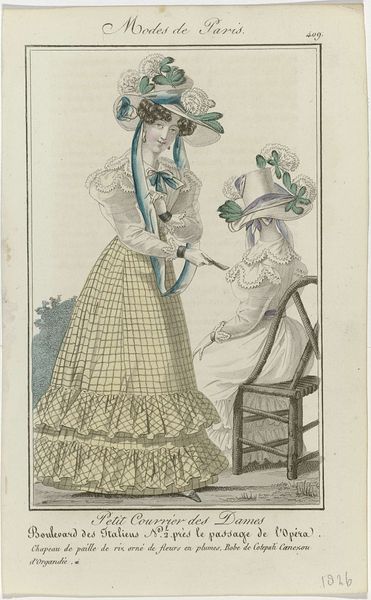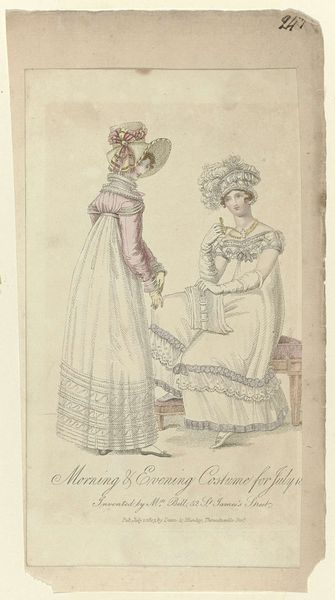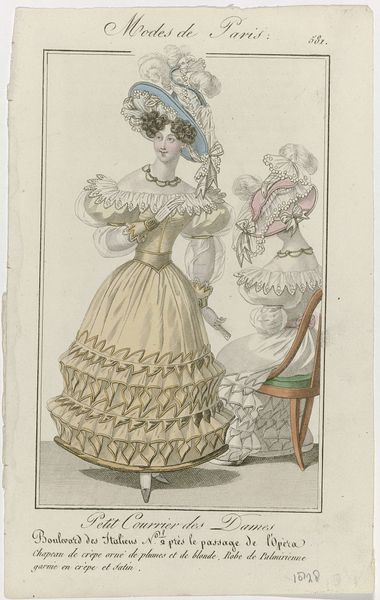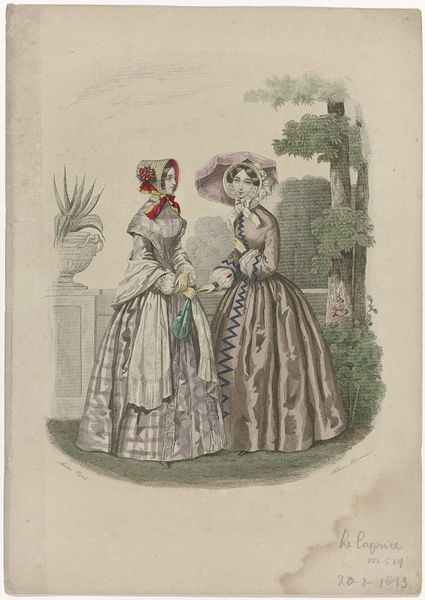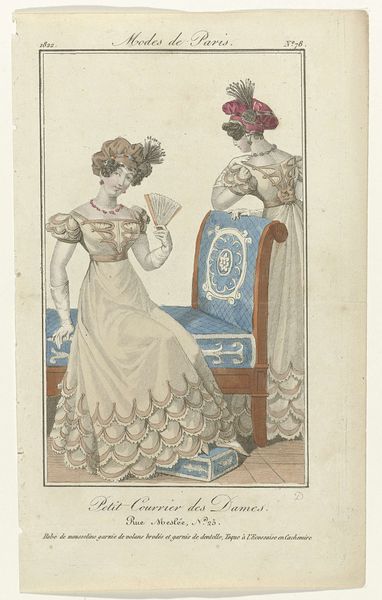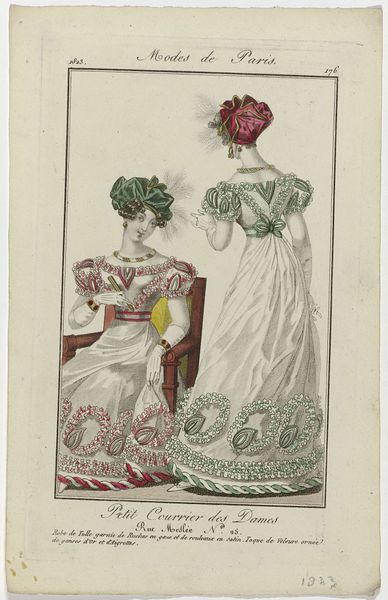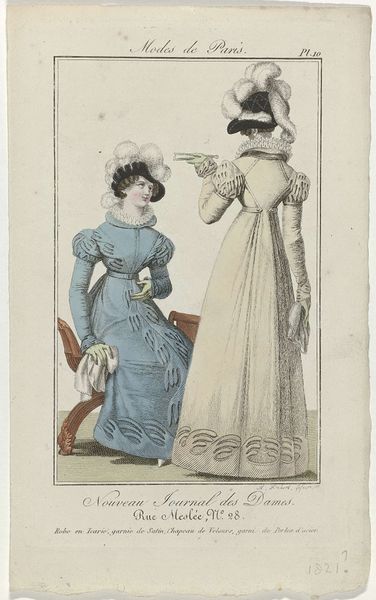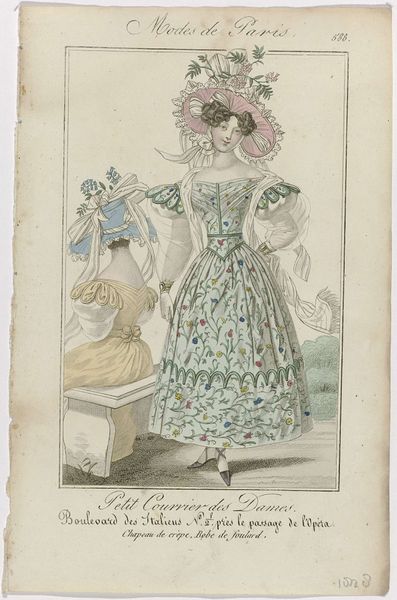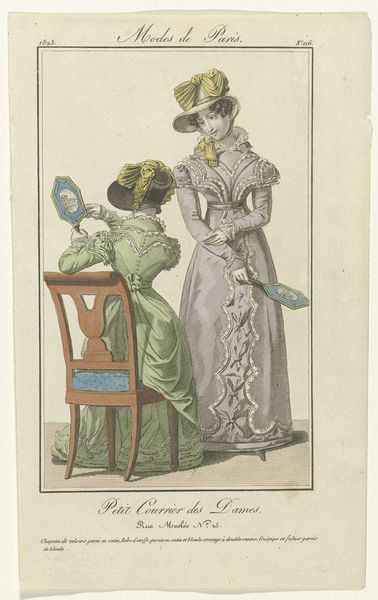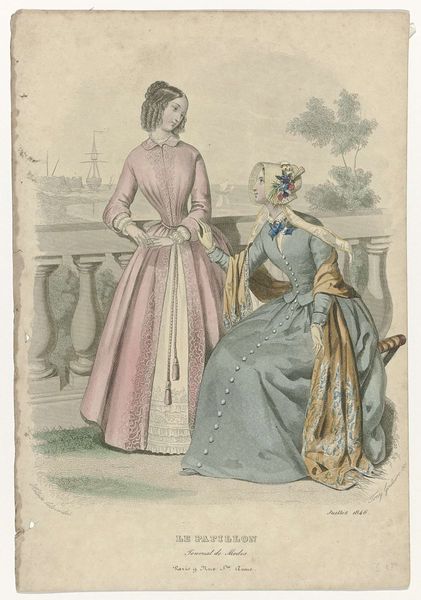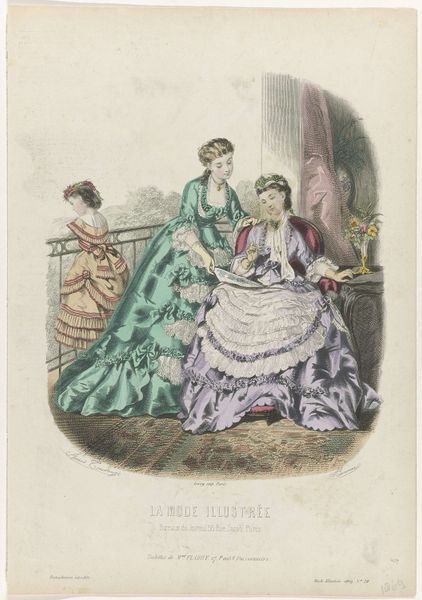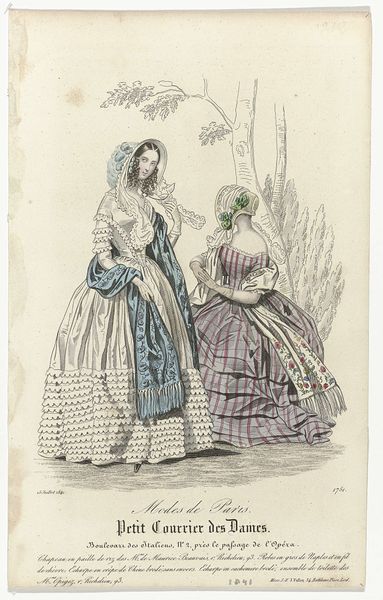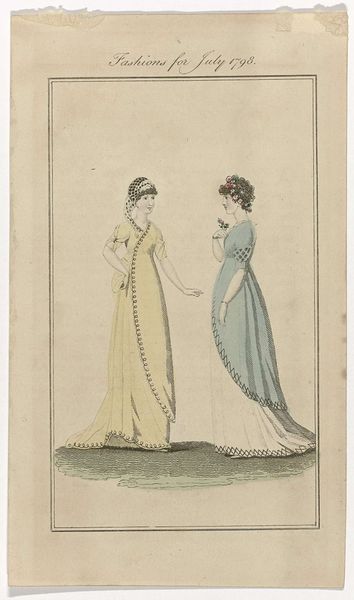
Dimensions: height 195 mm, width 116 mm
Copyright: Rijks Museum: Open Domain
Curator: This is "Petit Courrier des Dames, 1823, No. 135 : Robes de percal," a lithograph print by August Delvaux. It exemplifies early 19th-century fashion plates. Editor: It's delicate, almost dreamlike. I immediately notice the textures, the subtle patterning of the dresses, the crispness of the lithographic lines. There's a certain gentility conveyed. Curator: Delvaux's print gives us insights into the restrictive social codes governing women's lives at the time. Consider how dress, fabric, and adornment acted as signifiers of class, respectability, and even political leaning during the post-Revolutionary era. These women present a vision of bourgeois comfort. Editor: And what kind of labor was involved in the creation of such refined objects? How much skill to produce these delicate frocks, made of percal...? Percale itself suggests mass production, appealing to the emerging middle class—offering affordable style. Curator: Precisely. This print illuminates the growing accessibility of fashion and its role in shaping identity. It reveals how new styles might both reflect and challenge prevailing social hierarchies. The dresses project innocence but were they used for manipulation in social mobility? Editor: I'm more captivated by the actual making— the detailed ruffles on one skirt, the elegant folds, the hats covered in ornaments... Every piece required considerable labour. The artist meticulously depicts the fabric, suggesting its feel, drape, and the experience of wearing it. How the manufacturing changed social classes! Curator: Certainly. Looking at fashion from an intersectional feminist point of view reveals the complicated intersection between women’s sartorial choices and systems of power. Editor: True, but let’s acknowledge also the skills employed, materials accessed, and time spent on embellishing ordinary cloth. This tells a different story. The Rococo style returns as an expression of luxury—accessible for some through global trade and the rise of industry. Curator: Considering the societal landscape surrounding this image offers insight into fashion’s enduring importance, even now. Editor: Absolutely. And examining production and the value ascribed to labor uncovers layers of complex histories of women, class, and economics. It encourages us to interrogate our present consumptions, also.
Comments
No comments
Be the first to comment and join the conversation on the ultimate creative platform.
